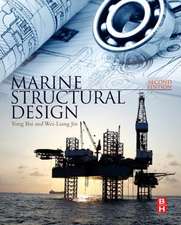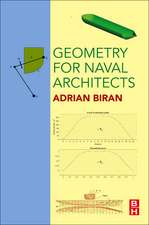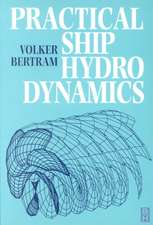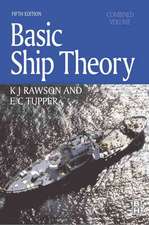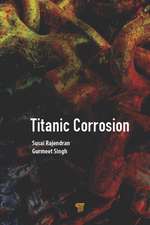Ship Design for Efficiency and Economy
Autor Volker Bertram, H. Schneekluthen Limba Engleză Hardback – 14 oct 1998
Preț: 943.52 lei
Preț vechi: 1036.83 lei
-9% Nou
Puncte Express: 1415
Preț estimativ în valută:
180.57€ • 187.57$ • 149.99£
180.57€ • 187.57$ • 149.99£
Carte tipărită la comandă
Livrare economică 27 ianuarie-10 februarie 25
Preluare comenzi: 021 569.72.76
Specificații
ISBN-13: 9780750641333
ISBN-10: 0750641339
Pagini: 224
Dimensiuni: 156 x 234 x 14 mm
Greutate: 0.5 kg
Ediția:2
Editura: ELSEVIER SCIENCE
ISBN-10: 0750641339
Pagini: 224
Dimensiuni: 156 x 234 x 14 mm
Greutate: 0.5 kg
Ediția:2
Editura: ELSEVIER SCIENCE
Public țintă
Academic Institutions where naval architecture and maritime studies are taught, plus consultancies.Cuprins
Main dimensions and main ratios: The ship's length; Ship's width and stability; Depth, draught and freeboard; Block coefficient and prismatic coefficient; Midship section area coefficient midship section design; Waterplane area coefficient; The design equation. Lines design; Statement of the problem; Shape of section area curve; Bow and forward section forms; Bulbous bow; Stern forms; Conventional propeller arrangement; Problems of design in broad, shallow-draught ships; Propeller clearances; The conventional method of lines design; Lines design using distortion of existing forms; Computational Fluid Dynamics for hull design. Optimization in Design: Introduction to methodology of optimization; Discussion of some important parameters; Special cases of optimization; Developments of the 1980s and 1990s. Some unconventional propulsion arrangements: Rudder propeller; Overlapping propellers; Contra-rotating propellers; Controllable-pitch propellers; Kort nozzles; Further devices to improve propulsion. Computation of weights and centres of mass: Steel Weight; Weight of 'equipment and outfit' (E&O); Weight of engine plant; Weight margin. Ship propulsion: Interaction between ship and propeller; Power prognosis using the admiralty formula; Ship resistance under trial conditions; Additional resistance under service conditions. Appendix: Stability regulations.
Recenzii
"this compact format book gives practical references and advice suitable for use by students and working Naval Architects...This is an up-to-date reference book." --Marine Engineers Review, July 1999
"It can be recommended to all those who are concerned with developing a ship design to obtain high efficiency and economy of operation." --The Naval Architect
"This is an up-to-date reference book which besides documenting and referencing established design procedures also touches on the options to use new computer based methods." --Marine Engineer's Review
"Material is directly usable not only in practice, in the design office and by shipowners, but also by students at undergraduate and postgraduate level... This comprehensive treatise of ship design and economy will find a ready readership in those academic institutions where naval architecture and maritime studies are taught, also with shipbuilders, consultancies, et al." --Nautical Magazine
"It can be recommended to all those who are concerned with developing a ship design to obtain high efficiency and economy of operation." --The Naval Architect
"This is an up-to-date reference book which besides documenting and referencing established design procedures also touches on the options to use new computer based methods." --Marine Engineer's Review
"Material is directly usable not only in practice, in the design office and by shipowners, but also by students at undergraduate and postgraduate level... This comprehensive treatise of ship design and economy will find a ready readership in those academic institutions where naval architecture and maritime studies are taught, also with shipbuilders, consultancies, et al." --Nautical Magazine




